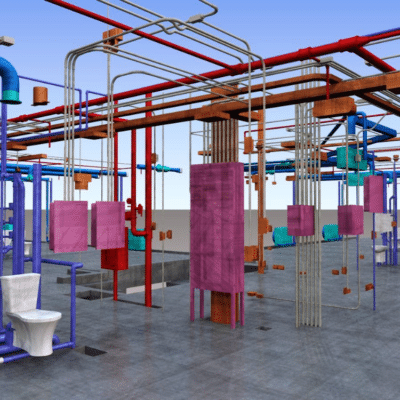
The high demand for BIM services is creating an entry for many new and young BIM partners. Although these new BIM providers are highly motivated they lack experience and know-how. We spoke with several of our clients and came up with five quick tips on how to choose a BIM partner. If you decide to outsource BIM work we recommend following the tips below to avoid serious problems:
1. Check specific experience
It is not only recommendable to find out how long the potential BIM provider has been in business, but also how long they have been providing the specific services you are requiring.
First, check their portfolio and go into detail on what type of services they have provided for those projects and their claims. For example, if you are a subcontractor looking for someone to help you with BIM coordination requirements, a provider that only possesses “BIM design” experience is not appropriate. It is necessary to have a provider possessing “BIM construction” experience.
Everybody will probably claim 3D, 4D, 5D, 6D….XD. The reality is very few possess real lifecycle experience. So, ask for a specific scope of work on those past experiences your prospect providers have had.
2. Ask for references
Everyone can claim “we focus on quality” and “we provide the best service”, but just like when you hire an employee where experience can always look fantastic, you need to check the facts. There is nothing like talking with someone that has already gone through the experience of working with such a firm or individual.
When referring to such references, question specifically about “weaknesses”. One thing is producing a quality As-Built Model, another very different skill is producing BIM coordination for a sub-contractor, and another is providing an FM data-rich BIM model, etc. It is also recommendable to raise the question of work quality, and how knowledgeable and how responsive the provider is.
3. Don’t confuse “low hourly rate” with your real cost
A low hourly rate is often irrelevant when comparing bottom-line costs. Obviously, extremes are relevant; a really high hourly rate will affect total cost. There are three main aspects, first of all, the number of hours a BIM consultant will take to complete a project. This can affect the total cost more than the actual cost per hour. Secondly, how much your own staff takes to complete the project? Finally, what would be the cost if the BIM work is not accepted by the client, or if you miss deadlines and subsequently not receiving invoice payments?
Ultimately, a lump sum fee is the most suitable payment solution understanding “consultant’s direct cost”. Whereby, perhaps you can allow the “coordination” portion of the proposal to be T&M (Time and Material), because it can be unforeseeable, and you do not want the provider to inflate the quote just in case. However, it is critical to trust your provider of course.
If you have to babysit your provider, and your own staff due to a lack of BIM knowledge, this is where cheap can become expensive. For instance, if BIM deliverables are not on time, and not of acceptable quality, this is probably the main source of project deliverables pain. Alas, payments as contractors can be held and those are typically much bigger numbers than “BIM services fees”. When you hire someone who either is not experienced or does not have enough staff to deliver, this can be a risk.
4. Accessibility is critical
Except for those rare cases where timing is not an issue, it is highly recommendable to hire a BIM consultant that is accessible, someone who responds to e-mails or calls within a couple of hours. This is specifically important for fast-track projects. Accessibility depends mainly on a couple of things:
a) Company Culture to respond imminently or quickly. The provider can be in an adjacent building, but if they are not experienced in responding quickly, that can create a lot of stress during project performance.
b) Time zone is important to have a good time overlap, especially during a BIM coordination project.
5. Size…sometimes does matter
Company size particularly matters when a project is of a certain size, because a team with several BIM resources may be required. But even on smaller projects, if a modeler is sick and subsequently unavailable, it is essential to avoid an impact on deliverables. Furthermore, this is where a defined company structure is imperative.
Finally, of course, these are not the only essential highlights; nonetheless, these points serve as a basis when making the right decision for successful project delivery.




